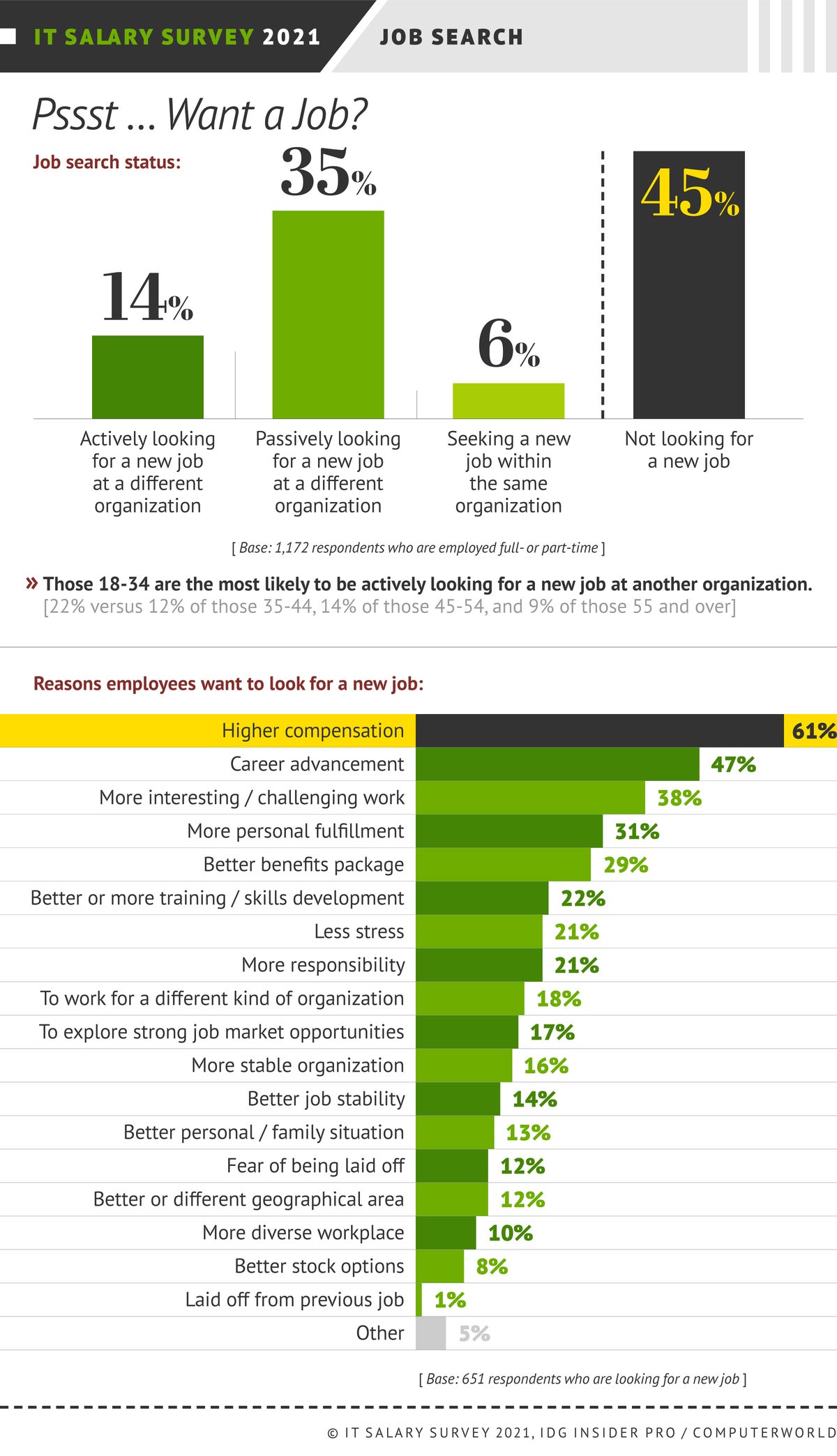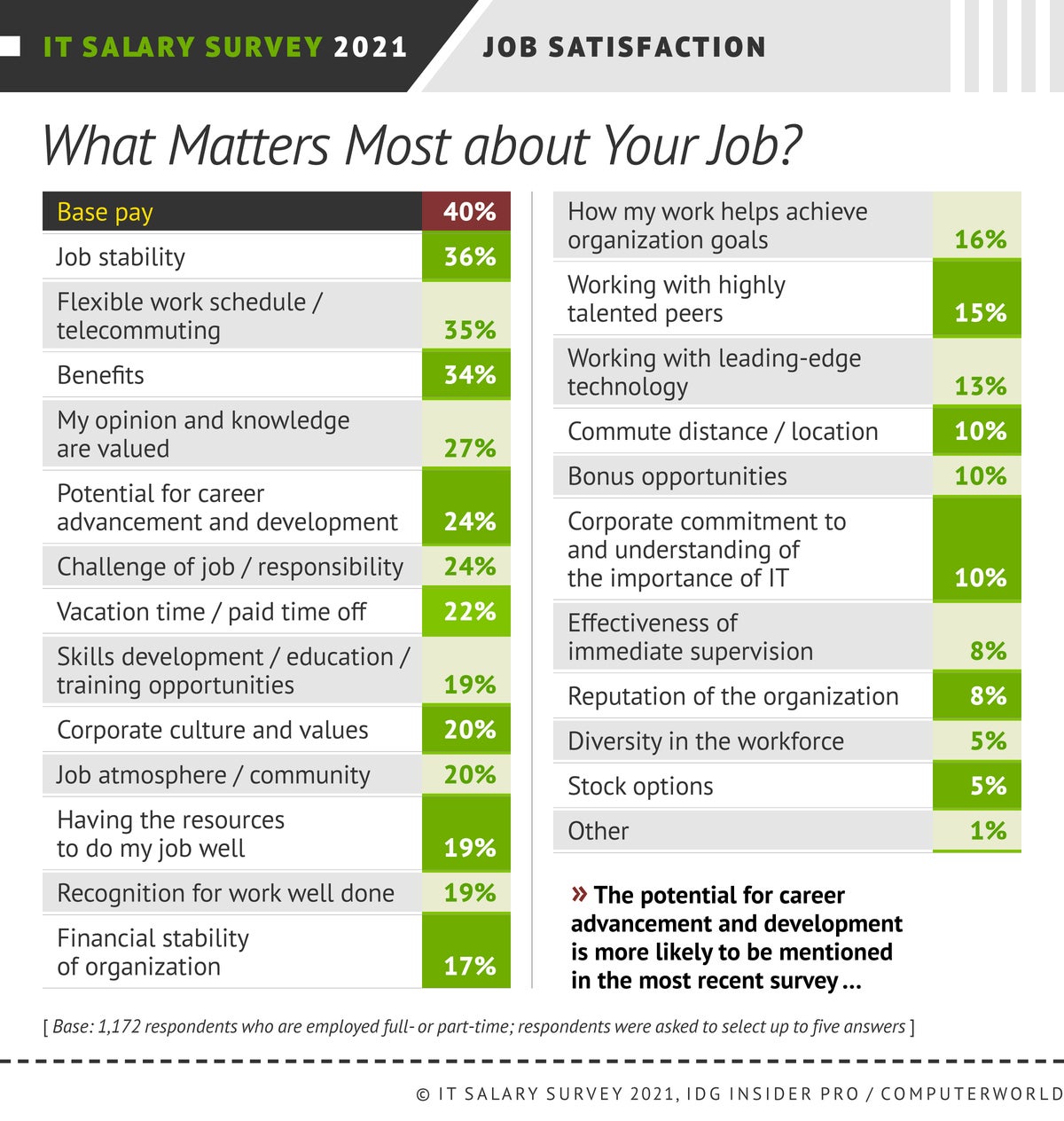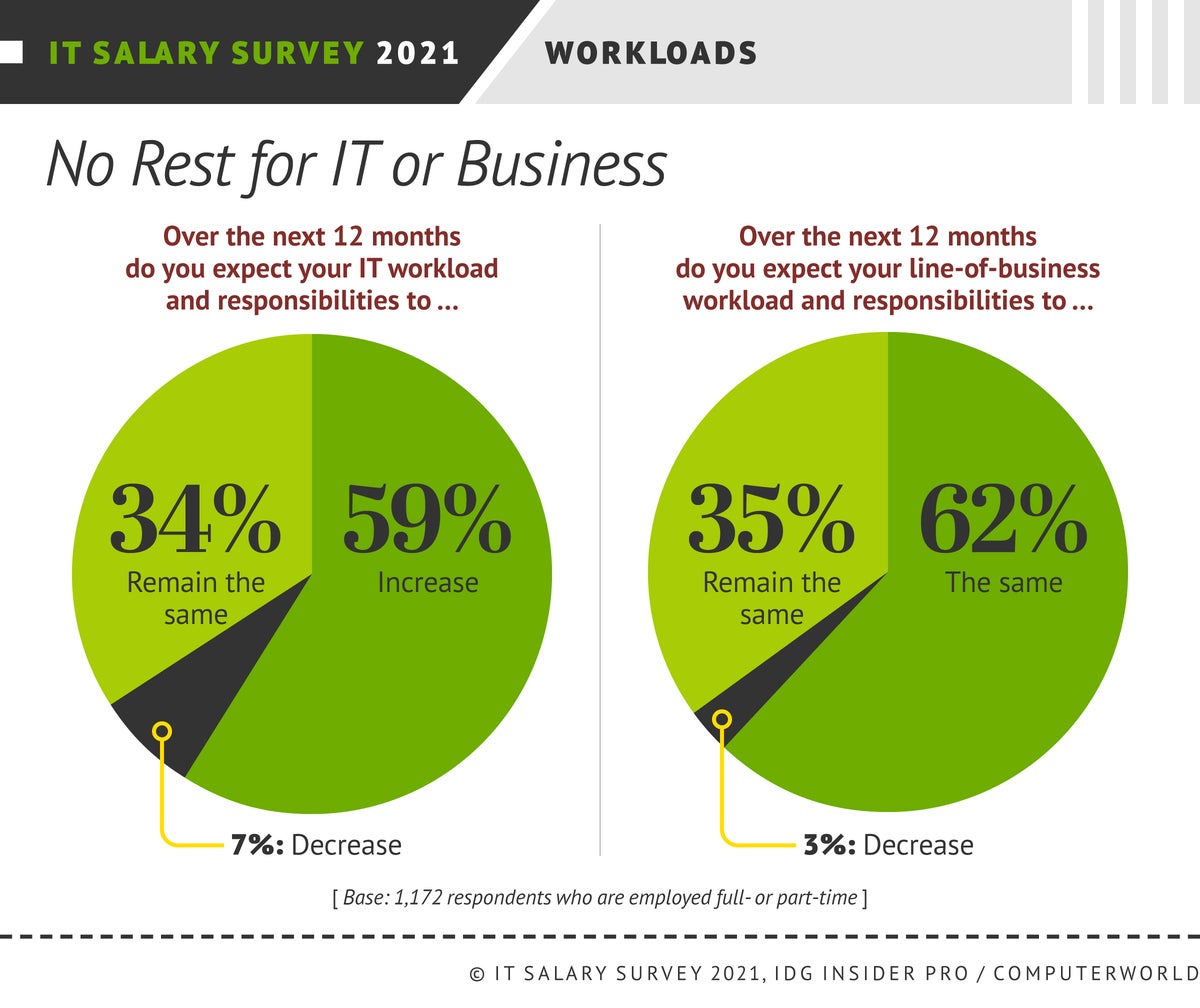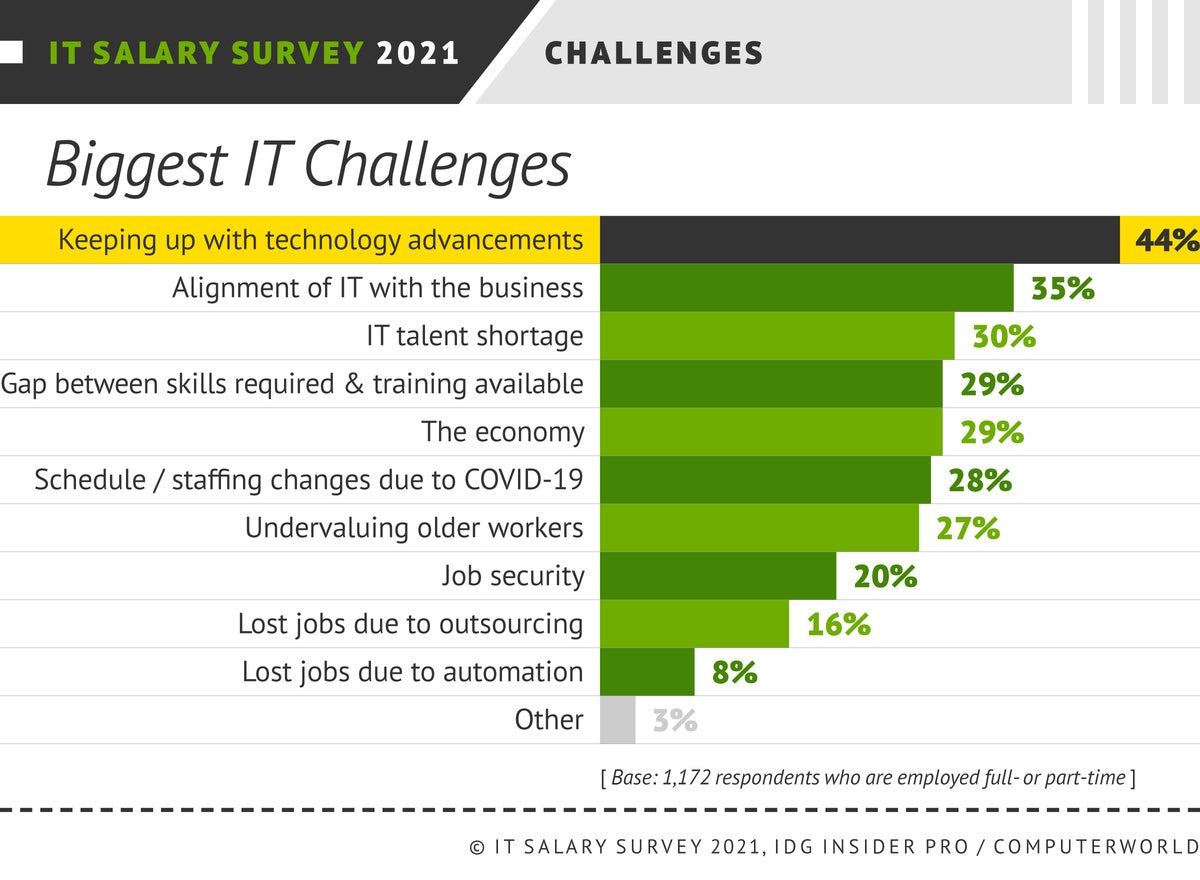- Energy Management in the AI Era: Cisco's Digital Transformation Advantage
- Foundation-sec-8b-reasoning: World's First Security Reasoning Model
- I changed 6 settings on my Roku TV for a significant performance boost
- Trump Administration Revises Cybersecurity Rules, Replaces Biden Order
- Asisa se apoya en la transformación digital para prestar un mejor servicio a los pacientes
IT Salary Survey 2021: Over half of IT pros are satisfied at work – but nearly half are job hunting

Given the year we have all had and the changes in working patterns we have had to adopt, IT professionals could be forgiven for being unsettled in their work. For many though, 2020 has been a year of growth and acceleration. As we have seen in our analysis of compensation and job opportunities, it’s a really good time to work in tech. The rapid adoption of cloud, the increase in application development, the focus on collaboration tools and communication, and the growth of ecommerce, data science and business analytics has meant there has been plenty of demand for IT skills and services.
As one McKinsey survey found, as a result of COVID-19, “companies have accelerated the digitization of their customer and supply-chain interactions and of their internal operations by three to four years and the share of digital or digitally enabled products in their portfolios has accelerated by a shocking seven years.”
Technology change, it seems, is for the long haul but it’s easy to suggest that IT professionals should be grateful, while other industries suffer and job losses mount. The reality is that now technology is more business critical than ever before and IT professionals are on the frontline, not just keeping the lights on across a wide range of industries but also managing expectations of change and increasing demands for automation. So, are IT professionals happy in their work?
The 2021 IDG Insider Pro and Computerworld IT Salary Survey of 1,172 IT professionals asked ‘how satisfied are you today with your total compensation package given your base salary, bonuses and benefits in relation to your job responsibilities?’
Given the year we have all had and the changes in working patterns we have had to adopt, IT professionals could be forgiven for being unsettled in their work. For many though, 2020 has been a year of growth and acceleration. As we have seen in our analysis of compensation and job opportunities, it’s a really good time to work in tech. The rapid adoption of cloud, the increase in application development, the focus on collaboration tools and communication, and the growth of ecommerce, data science and business analytics has meant there has been plenty of demand for IT skills and services.
As one McKinsey survey found, as a result of COVID-19, “companies have accelerated the digitization of their customer and supply-chain interactions and of their internal operations by three to four years and the share of digital or digitally enabled products in their portfolios has accelerated by a shocking seven years.”
Technology change, it seems, is for the long haul but it’s easy to suggest that IT professionals should be grateful, while other industries suffer and job losses mount. The reality is that now technology is more business critical than ever before and IT professionals are on the frontline, not just keeping the lights on across a wide range of industries but also managing expectations of change and increasing demands for automation. So, are IT professionals happy in their work?
The 2021 IDG Insider Pro and Computerworld IT Salary Survey of 1,172 IT professionals asked ‘how satisfied are you today with your total compensation package given your base salary, bonuses and benefits in relation to your job responsibilities?’
Over half of respondents were either very satisfied (16 percent) or satisfied (42 percent), which when compared with our 2020 survey showed little change. Clearly the current climate has done little to alter how people feel about their work, although we did find that the percent of job changes due to layoffs doubled in the 2021 survey.
With 20 percent neither satisfied or dissatisfied and 20 percent either dissatisfied or very dissatisfied, there remains a significant number of IT professionals that are not content in their current roles, or within their current working environments. In some instances, there is proportionately more dissatisfaction within certain roles, such as help desk and enterprise application integration, two areas that would no doubt have been affected considerably by the pandemic.
There are also notable differences in age groups with, in general, older workers (age 45+) reporting higher levels of satisfaction. So, what does this mean in terms of job movement? Is dissatisfaction leading to a desire to move jobs?
Available for hire
We asked our survey about their job search status plus any key reasons behind their decisions to perhaps move on to pastures new. The numbers looking for a new position in another company, either actively (14 percent, compared with 12 percent last year) or passively (35 percent, the same as last year), roughly match the number of IT pros dissatisfied in their current role. Six percent, meanwhile, are looking for new positions within their current organization. Just under half (45 percent) are not looking to move anytime soon.
Those workers in the 18-34 age group are the most likely to be actively looking for a new job at another organization (22 percent versus 12 percent of those between 35-44, 14 percent of those 45-54, and 9 percent of those 55 and over). That’s not that surprising given the traditional structure of roles and acquisition of skills. So, what are the key reasons for looking for alternative employment?

Top of the list, unsurprisingly, is looking for higher compensation (61 percent, up from 59 percent last year), followed by seeking career advancement (47 percent) and looking for more interesting or challenging work (38 percent). Those seeking a more diverse workplace has doubled this year, from 5 percent in 2020 to 10 percent in 2021, with just under a quarter (21 percent) seeking more responsibility.
Interestingly, especially during these uncertain times, job stability is not a particularly big issue. Just 14 percent of respondents (the same figure as the 2020 survey) cite job stability as a reason for looking for new employment. It suggests that their current roles are not under threat and given the reasons we have outlined above, in terms of reliance on IT and industry acceleration, this is perhaps fair.
Certainly, when we asked what matters most about your current work, stability was the second highest factor on the list at 36 percent (compared with 38 percent in 2020). No surprise, base pay dominated at 40 percent (compared to 37 percent last year). The potential for career advancement and development was more likely to be mentioned this year (24 percent) compared with last year (19 percent).

Perhaps a reflection of current, pandemic-induced working practises, one of the biggest declines was job atmosphere/community at 20 percent, down from 27 percent last year. Vacation time (22 percent, down from 27 percent last year) and commute distance/location (10 percent, down from 17 percent last year) were also notable changes.
In terms of demographics, we found that job stability was more important to middle management (43 percent) and that more females (33 percent) than males (22 percent) cited potential for career advancement and development as a key factor.
“I want to create a more defined role that utilizes my strengths to influence, support and deliver operational technology across the business and manufacturing,” said a female IT director from New York. “This means, aligning the business with a value-add process structure through technology, SCADA systems on the plant floor,” adding, on a personal level, she would like this year to continue developing and improving project management capabilities.
IT workloads are on the rise
With the increase in expectations and acceleration of digital transformations across industries, it is perhaps no surprise that so many IT professionals are predicting rising workloads. Over the next 12 months, 59 percent of respondents expect IT workloads to increase. Last year, this figure was still high (55 percent) but no one could really have foreseen what was to come. Now, we understand the growing importance place on tech and what this will mean to workloads in future.

“2021 will challenge us to keep-up with newer tech,” said one Maine-based application developer, “and I will be looking for a compensation increase once the pandemic subsides and business resumes to pre-pandemic levels.”
That may be wishful thinking. IT professionals face a myriad of challenges in the coming months, of which keeping up with technology advancements is the most obvious. In fact, 44 percent cited it as their top challenge, although this was a reduction on last year’s survey when it topped the poll with 54 percent. Interestingly, all top four challenges from last year’s survey dropped this year. Aligning IT to the business fell from 38 percent to 35 percent, IT talent shortage fell from 37 percent to 30 percent and gap between skills required and training available fell from 34 percent to 29 percent.
The main reason for this is the impact of COVID-19. The addition of a pandemic-related challenge – a change in work schedules due to COVID – was chosen by 28 percent of IT pros, while economic challenges rose from 16 percent in last year’s survey to 29 percent in this year’s survey. This was fairly even across age groups, except for the 18–34-year-olds, of which less than a quarter (23 percent) saw the economy as a major challenge.

But while youthful optimism blunts the realities of economic pressures, this age group did see issues ahead with a mismatch between required skills and training (35 percent). Only the 35-44 age group was more concerned at 36 percent. Senior IT leaders, by contrast, cited IT talent shortages (43 percent) and alignment of IT with the business (48 percent) as major challenges for 2021.
As one India-based data center manager put it, “I’m looking for opportunities that offer more learning and more challenges in the job where I can grow professionally.” That pretty much sums it up for most respondents. Throw-in increased compensation and you have a full house. For most IT pros, the prospects are good but in a time of continued skills shortages and increased demands for IT, employers need to be more aware of what it takes to keep most, if not all of their IT staff happy.
[ Still to come this week: detailed analysis of technology certifications, and – how to get your hands on the full Salary Survey 2021 data set. ]

